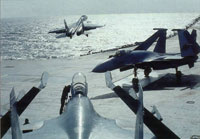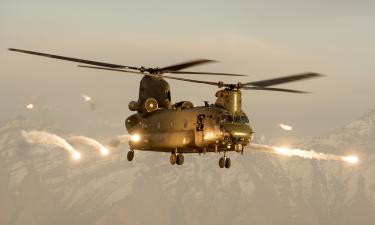Russia cancels sale of Su-33 fighters to China to prevent their pirate copies
A large arms deal between Russia and China has not taken place over a possible violation of intellectual property rights. Russia has refused to sell Su-33 deck-based fighter jets to China, The Moskovsky Komsomolets newspaper wrote.

The talks about the deal began quite a while ago. China intended to buy up to 50 jets for its aircraft carriers, although the country originally wanted to buy only two Su-33 jets on a trial basis. This intention became the bone of contention in the talks between the two countries: Russia believed that the Chinese customers could copy the Russian technology for the production of their own clones of the Russian fighters.
Russia had a motive to think so, the newspaper wrote. In 1995, China received a license for the production of 200 Su-27 fighters of specific modification, complete with Russian avionics, radars and engines. However, Russia terminated the agreement for the purchase of 95 planes in 2006, because Chinese aircraft-makers began to produce a similar fighter, although it was equipped with Chinese avionics and systems.
To put it in a nutshell, China has an experience of cloning the fighters of Russia’s renowned Sukhoi jets. The problem was discussed at the 13th meeting of the Russian-Chinese Committee for Military Cooperation in December. It is obviously highly unprofitable for Russia to let cheaper Chinese analogues of its reputable jets appear in the region.
Russia declined China’s offer to increase the purchase to 14 jets: at least 24 aircraft must be shipped to overbalance the production of planes.
It is too early to say that the problem has been entirely solved. China is extremely interested in the deck-based aircraft for its aviation. The nation plans to complete its conventional destroyer in 2010 and pass into service a nuclear-powered aircraft carrier in 2020. It is worthy of note that China used to purchase a number of incomplete Soviet vessels of a similar class, which were also reportedly used to copy Russian defense technologies.
China purchased a fair amount of used and incomplete aircraft carriers of the Soviet production within 25 years, BFM business portal said. China could reportedly use the vessels to borrow Russian defense production technologies.
Russia officially notified China at the end of April 2008 that the production of J11 fighter jets, the copies of Russia’s Su-27SK fighters, was a violation of international agreements. Moscow promised to launch legal proceedings to defend its intellectual property. If China learns to build its own version of Russia’s Su-27, the country will easily oust Russia from the arms markets of third world countries. Russian experts believed that it would take the Chinese about ten years to develop their own aircraft engine, but China made it a lot faster.
Russia has delivered 76 Su-27SK to China since 1992, and sold the license for the production of 200 more jets in 1995. China started building its own J11 planes in 1996 with the use of Russian spare parts, The Moskovsky Komsomolets wrote.
The modernized J11 fighter of the Chinese production, presumably made of Chinese spare parts, was outfitted with the enhanced Chinese radar and could carry made-in-China missiles to strike ground targets in the beginning of the 2000s. In 2007, China demonstrated the first prototypes of J11B model, which was almost a complete copy of the Su-27SMK jet.
The Russian economy loses up to $2 billion ever year on the pirate production of various modifications of the renowned Kalashnikov assault rifle, Russia’s major defense export enterprise, Rosoboronexport said. The USSR used to hand over a number of licenses for the production of Kalashnikov rifles and its modifications to 18 countries. All of them expired at the end of the 1980s and in the beginning of the 1990s.
The Sukhoi Su-33 (NATO reporting name ‘Flanker-D’) is a carrier-based multi-role fighter aircraft produced by Russian firm Sukhoi beginning in 1982. It is a derivative of the Su-27 ‘Flanker’ and was initially known as the Su-27K. The main differences from the Su-27 are that the Su-33 can operate from aircraft carriers and is capable of aerial refueling.
Subscribe to Pravda.Ru Telegram channel, Facebook, RSS!



